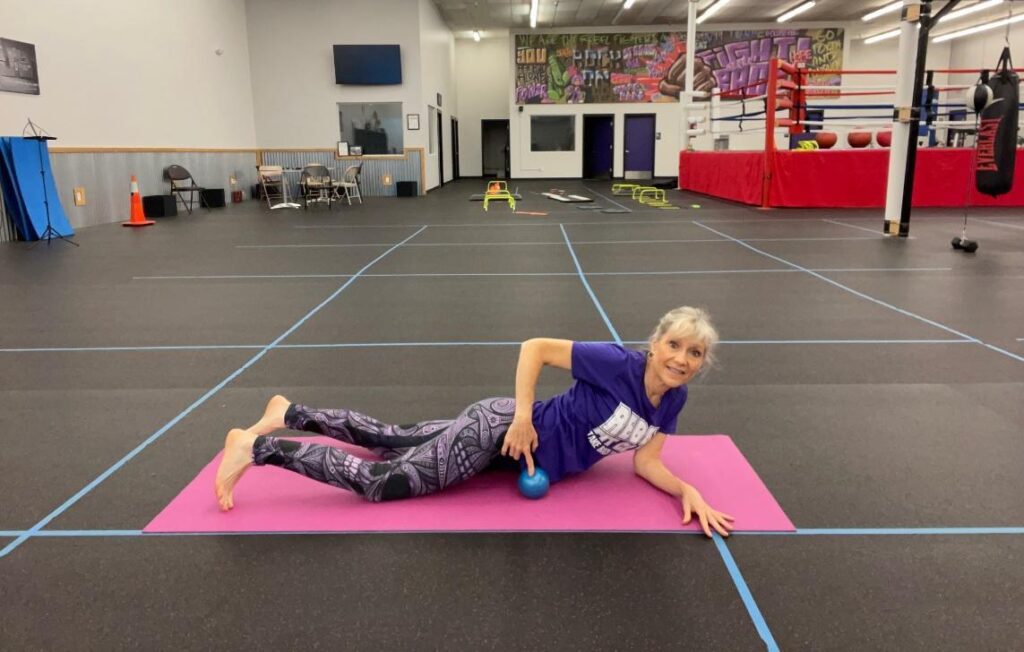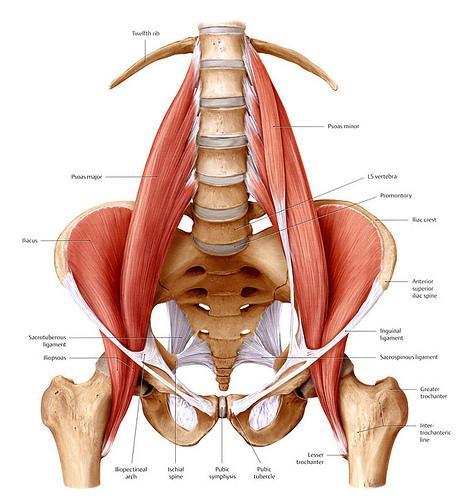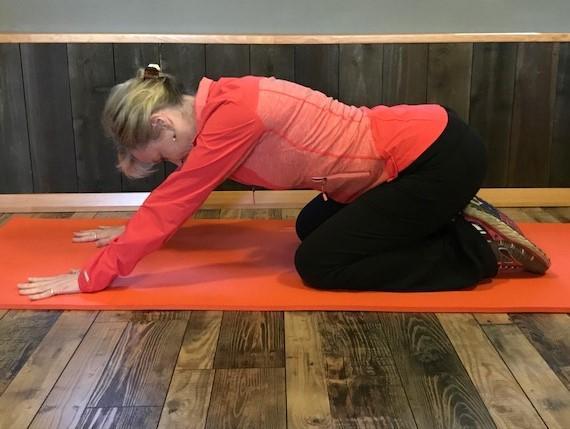
Tight hip flexors are a huge problem for people with Parkinson’s disease. Many of my fighters complain of hip and back issues that stem from tight psoas and other hip flexor muscles.
The psoas is a major hip flexor muscle that performs several complex actions, like lifting your legs and bending forward. It attaches at the bottom of the thoracic spine, runs along the lumbar spine, then threads through the pelvis, over the front of the hip joint, and attaches at the top of the femur (thigh bone). Wow!!
It’s the only muscle that connects the spine to the leg. You can see why when this muscle gets tight it causes so many balance, posture, and gait issues.
The psoas is also intimately connected to our adrenal glands, which can make it even tighter when we are stressed.

Watch the video below to learn How to Use Balls to Release Tight Parkinson’s Hip Flexors. This is a great technique used by athletes and practitioners.
You can follow these step-by-step instructions:
- Lie on your belly, with your forearms flat on the floor and elbows under your shoulders.
- Place the tennis or Pilates balls just on the inside of your hip bones (the Anterior Superior Iliac Spine or ASIS).
- Keep your elbows close to your sides and glide your shoulder blades together and down, with your collar bones lifted.
- It takes about 90 seconds for any muscle to release, so breathe and stay in each position for a while if you can. If your psoas is really tight, this could be quite uncomfortable, but if you hang in there for a few seconds, you should feel the muscle start to release and feel better.
- Then move the balls down, just above or on the inside of your hip bone, or any place which feels tight.
- End by sitting back on your heels or child’s pose.

If this stretch is too intense or you feel back pain, you can try one of the other hip flexor release exercises shown here and here.
Take it slow and ease into this position!

Ready to take back your fight?
Contact me to get started in Kimberly Berg’s Rebel Fit Club Parkinson’s Boxing classes today. We have online workouts, too!
Subscribe now to get more tips and exercises for Parkinson’s delivered right to your inbox!